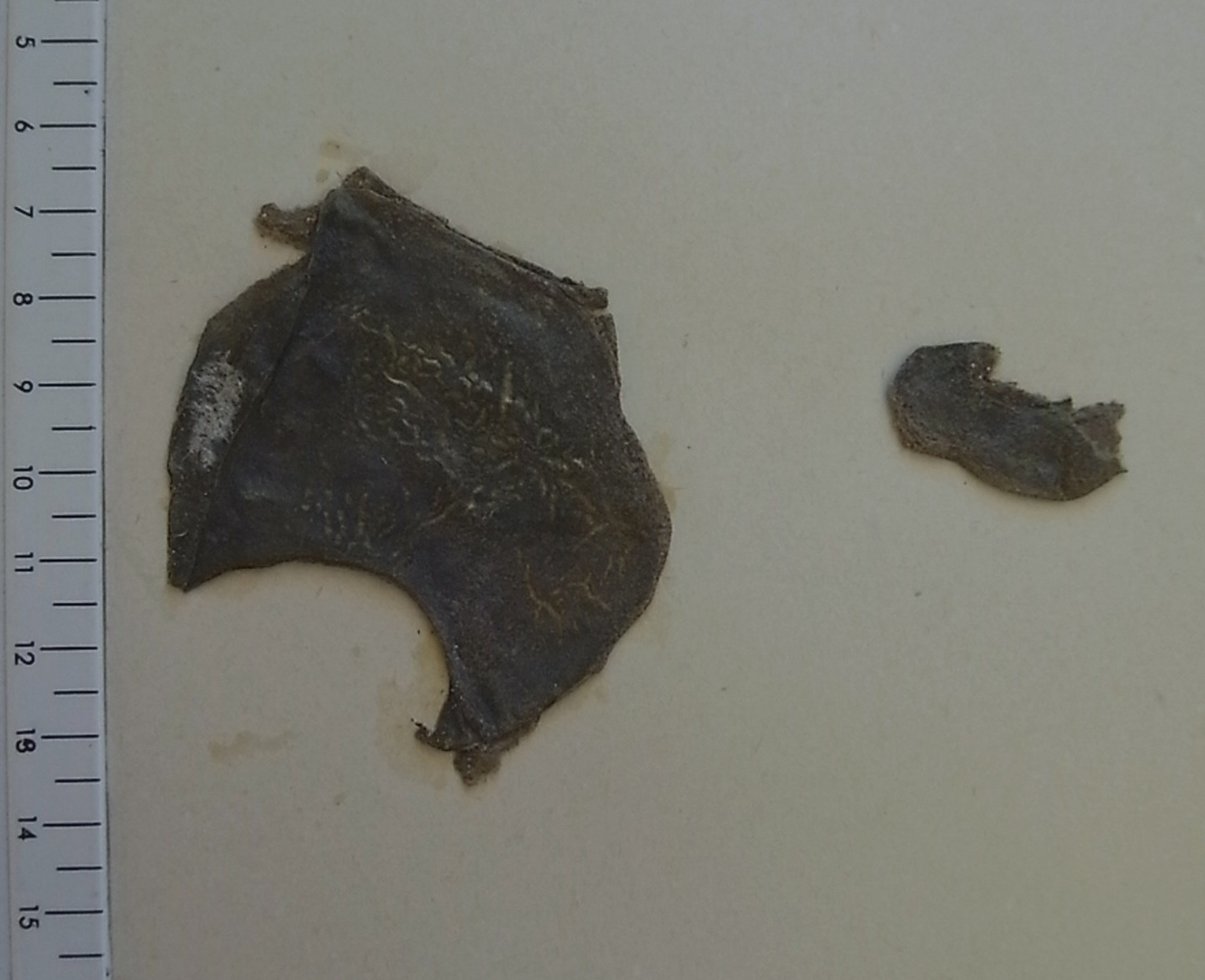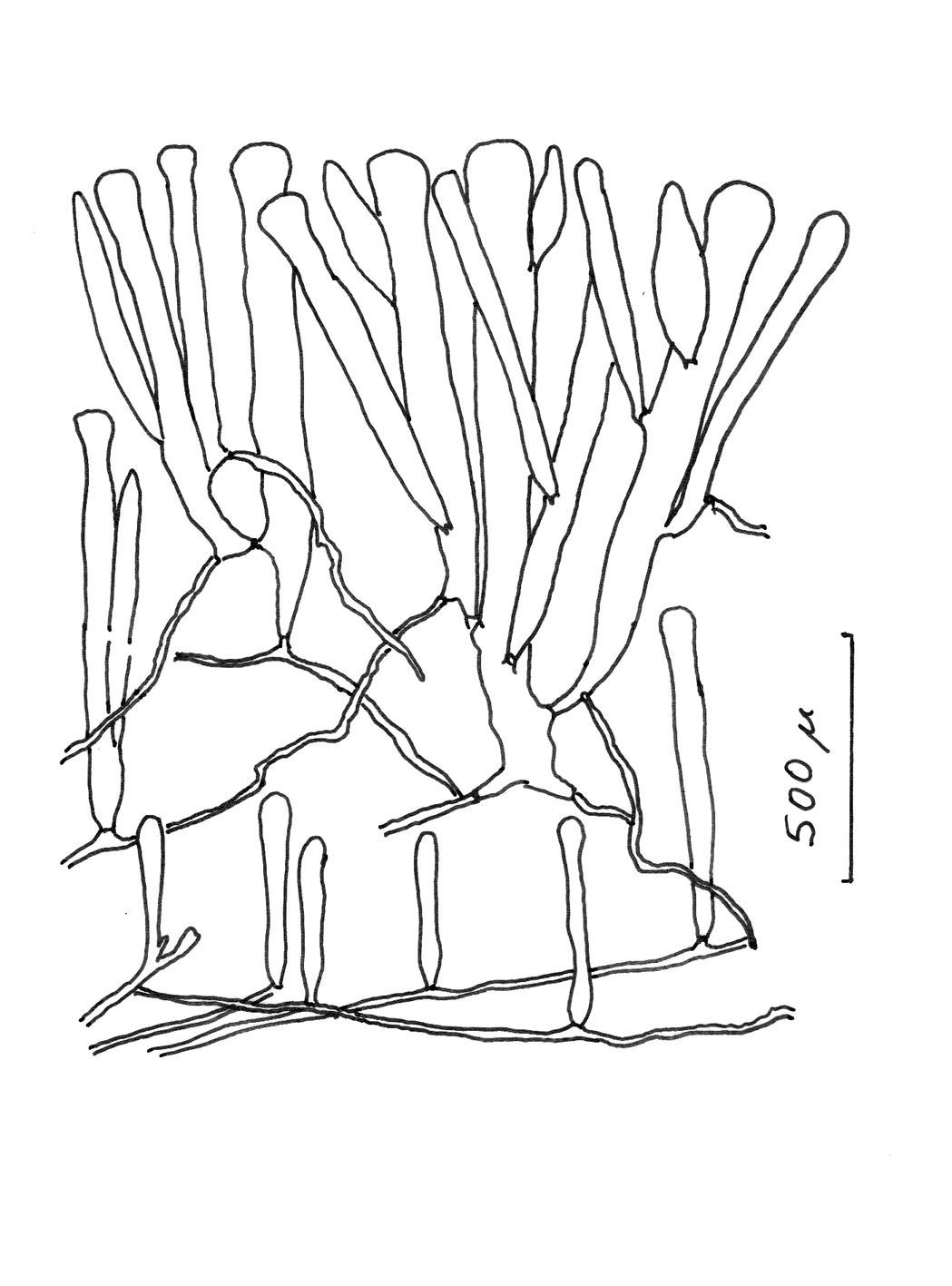Seaweeds of the South African South Coast


Order Bryopsidales
Family Codiaceae
Codium pelliculare P. C. Silva 1959: 127-130
Thallus dark green, applanate, thin (1.5-3 mm), firm, often with rounded lobes, up to 15 cm diameter, becoming hollow and sand-filled when old. Outer layer comprising primary and secondary utricles; primary utricles arising from branches of central hyphal system, secondary utricles arising from middle or lower part of primary utricles and forming clusters. Utricles club-shaped, widening at apex, often constricted below apex, 700 - 1100 (-1350) µm long, older utricles often broader near middle; apices truncate or rounded. Hairs or hair-scars absent. Gametangia lanceolate-ovoid to fusiform, 230 – 410 µum long, 1-3 per utricle, borne on pedicels.
Collections, ecology and regional distribution
A South African south coast endemic, recorded from Arniston (Western Cape) to Port St. Johns, Eastern Cape (23-46). Found in pools in the lower eulittoral.
Type locality: East London (Silva et al. 1996).
Note: Silva (1959) records that C. pelliculare is unique in habit and anatomy. Its membrane-like appearance is striking, and “a plug forms at the base of each developing utricle rather than at the point of departure of the lateral branch (new growing point) from the old apex, as in all other species of the genus”.

Codium pelliculare. The very thin thallus is apparent in this herbarium specimen.

Codium pelliculare, utricles (re-drawn from Silva 1959)
References
Silva, P.C. (1959). The genus Codium (Chlorophyta) in South Africa. Journal of South African Botany 25: 101-165, 22 figs, Plates II-XVI.
Silva, P.C., Basson, P.W. & Moe, R.L. (1996). Catalogue of the benthic marine algae of the Indian Ocean. University of California Publications in Botany 79: 1-1259.
Cite this record as:
Anderson RJ, Stegenga H, Bolton JJ. 2016. Seaweeds of the South African South Coast.
World Wide Web electronic publication, University of Cape Town, http://southafrseaweeds.uct.ac.za; Accessed on 22 December 2025.